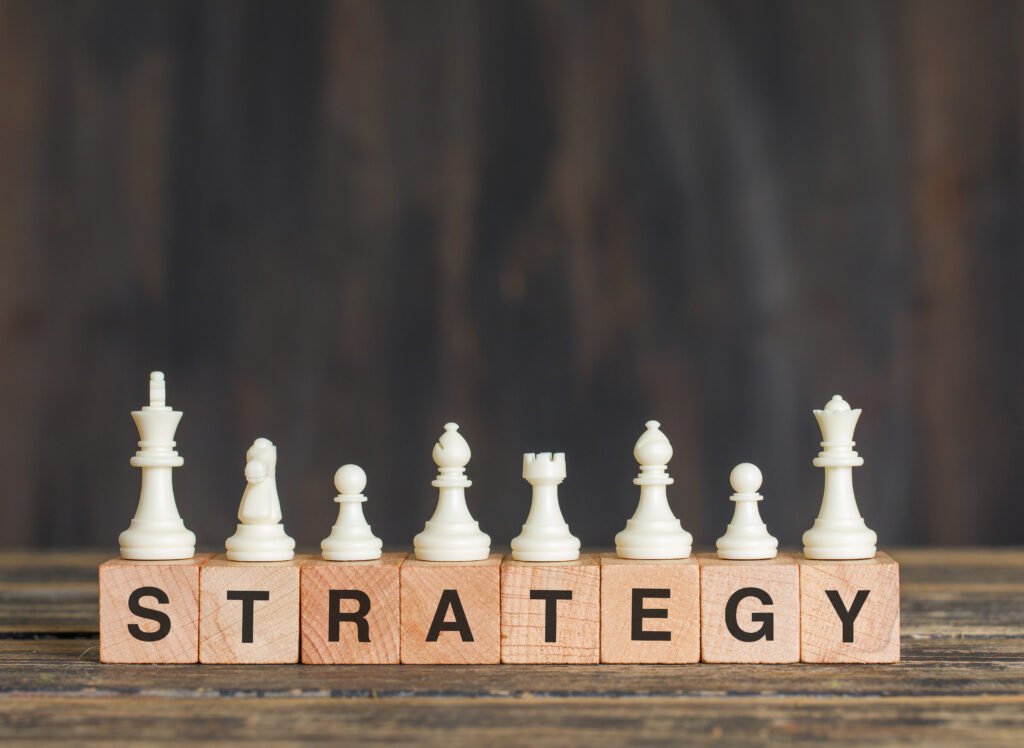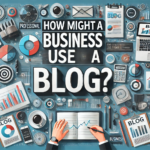
If you aim to surpass your competitors, SEO and web design are pivotal in determining your success. SEO enhances your website’s visibility, enabling it to achieve elevated positions in search engine results pages (SERPs). On the other hand, effective web design ensures that visitors stay on your website for longer durations and are more likely to convert into customers.
This article discusses everything about SEO and web design and why optimizing for both is essential. And in the end, we’ll share some tips and best practices to help you get the most out of both for your website or business.
Let’s begin:
What Is SEO And Web Design?

SEO enhances a website’s visibility and ranking by optimizing its content, structure, and various elements on search engine results pages (SERPs). The goal is to make the website more appealing to search engines, resulting in increased organic traffic and a better online presence.

On the other hand, Web design encompasses creating and designing a website’s visual appearance and layout. It uses various elements such as graphics, typography, color schemes, and user interface (UI) components to create an aesthetically pleasing and user-friendly website.
Combining them makes them a powerful combination that can help your business succeed. Now, let’s understand the connection between them.
What’s The Connection Between SEO And Web Design?
The interplay between SEO and web design is crucial for maximizing a website’s online presence and competitiveness. Let’s explore in detail how SEO and web design interact with each other:
User Experience And Engagement
- Positive User Experience for SEO: Search engines prioritize websites that provide a positive user experience. When users have a good If visitors have a positive experience on your site, they are inclined to prolong their stay, interact with your content, and interact with your website’s elements. These user engagement signals send positive indicators to search engines, leading to improved SEO rankings.
- Factors Influencing User Engagement: Various factors influence website engagement, including site load speed, intuitive navigation, mobile responsiveness, appealing design, relevant content, clear call-to-action, and easy-to-use forms. Optimizing these elements enhances the overall user experience, increasing engagement and improving SEO performance.
Site Structure And Navigation
- Optimizing Website Structure: A well-optimized website structure improves user experience and search engine visibility. This involves organizing content into logical categories, creating a hierarchical site architecture, and optimizing URLs, headings, and internal linking. An organized website enables search engine crawlers to traverse and understand your content more effectively through clear content architecture.
- Importance of Intuitive Navigation: Intuitive navigation guarantees users can effortlessly locate the information they seek on your website. A clear and well-designed navigation menu, breadcrumbs, and internal linking enhance user experience and facilitate search engine crawling and indexing of your pages. Intuitive navigation also improves the accessibility and usability of your website, contributing to better SEO rankings.
Mobile-Friendly Design
- Significance of Mobile Responsiveness: In the growing reliance on mobile devices for internet browsing, maintaining a mobile-friendly website is crucial for effective SEO. Mobile responsiveness guarantees that your site adjusts and presents itself accurately across various screen dimensions, ensuring a smooth user experience. Search engines like Google prioritize mobile-friendly websites, deeming them a significant ranking factor.
- Best Practices for Mobile-Friendly Websites: Best practices for creating a mobile-friendly website include using responsive design, optimizing images and media for mobile, ensuring touch-friendly elements, and minimizing page load times. Mobile-friendly websites attract more visitors, reduce bounce rates, and contribute to better SEO performance.
Page Speed And Performance
- Impact of Website Speed: Website speed is critical, as the speed of a website significantly impacts both user experience and SEO. Websites that load slowly cause users frustration and increase bounce rates. Search engines also consider page speed a ranking factor and prioritize fast-loading websites. Optimizing website speed improves user experience, reduces bounce rates, and enhances search engine rankings. However, there are several tools in the market to check the website speed, such as GTmetrix, Page Speed Insights, etc.
- Strategies to Optimize Page Speed: Strategies for improving page speed and performance include Optimizing images and videos, compressing CSS and JavaScript files, and utilizing browser caching to enhance performance by enabling compression, minimizing server response time, and using content delivery networks (CDNs) can contribute to optimization techniques ensure your website loads swiftly and effectively, adding to an affirmative user experience and improved SEO performance.
Content Presentation And Optimization
- Impact of Web Design on Content: Web design notably affects how your content is perceived and presented to users. Effective web design ensures your content is organized, visually appealing, and easily read. A well-designed layout, appropriate use of headings and subheadings, engaging visuals, and optimized typography contribute to a positive user experience and enhance content visibility.
- Tips for Optimizing Content Presentation: To optimize content presentation for improved SEO performance, consider using relevant and descriptive headings, incorporating strategic keywords naturally, utilizing bullet points and lists for readability, optimizing images with alt text and descriptive filenames, and implementing clean and visually pleasing design. Presenting your content as user-friendly and visually appealing can enhance engagement, encourage social sharing, and improve SEO rankings.
Now that you know the connection between SEO and web design, Let’s look at the effective way to develop an SEO and Web design Strategy.
Developing An Effective SEO And Web Design Strategy

Business strategy concept with chess pieces on wooden cubes on wooden background side view.
Conducting Keyword Research
- Importance of Keyword Research: Keyword research is the foundation of an effective SEO and web design strategy. It helps identify relevant keywords and phrases to understand what your target audience is seeking, enabling you to optimize your website’s content accordingly.
- Tools and Techniques for Finding Keywords: Utilize keyword research tools such as Google Keyword Planner, SEMrush, or Moz Keyword Explorer to identify high-volume, low-competition keywords. Analyze competitor websites and consider user intent to uncover valuable keywords for your strategy.
On-Page Optimization
- Optimizing Meta Tags, Headings, and Content: Optimize meta tags (including title tags and meta descriptions), headings (H1, H2, etc.), and content with targeted keywords. Craft compelling meta tags to entice users to click on your website in search results. Ensure your content is pertinent, well-organized, and provides value to the users.
- Utilizing Schema Markup and Structured Data: Implement and incorporate schema markup and structured data to give search engines extra information regarding your website. This can enhance your website’s visibility in search results and improve click-through rates.
Link Building And Backlink Strategy
- Importance of High-Quality Backlinks: Backlinks from authoritative websites are crucial for SEO success. They convey to search engines that your website is reliable, trustworthy, and valuable. Focus on acquiring high-quality backlinks from reputable sources within your industry.
- Strategies for Acquiring Backlinks: Develop a comprehensive backlink strategy, including techniques such as guest blogging, influencer outreach, content promotion, and building relationships with industry influencers. Create valuable, shareable content that naturally attracts backlinks.
Responsive Web Design And Mobile Optimization
- Ensuring Seamless User Experience: Responsive web design ensures your website is accessible and user-friendly across various devices and screen sizes. It provides a seamless user experience for user engagement and SEO rankings.
- Implementing Mobile Optimization Techniques: Optimize your website for mobile devices by using mobile-friendly design elements, optimizing page load speed, enabling responsive images, and implementing mobile-specific features like click-to-call buttons. Give precedence to mobile optimization to meet the growing demands of mobile users.
Measuring Performance And Making Improvements
- Key Metrics to Track: Monitor key performance metrics such as Organic traffic, keyword Keyword rankings, bounce rate, conversion rate, and engagement metrics like time on page and pages per session. Utilize tools like Google Analytics and Google Search Console to gather data and insights.
- Analyzing Data and Making Data-Driven Improvements: Regularly Examine the gathered data to pinpoint areas that can be enhanced. Make data-driven decisions by placing low-engagement pages, optimizing underperforming keywords, refining your content strategy, and making design enhancements based on user behavior and feedback.
By adhering to these steps and consistently adjusting your strategy according to data insights, you can develop an effective SEO and web design strategy that helps you outrank your competitors and maximize your online presence.
Is Web Design Different From Web Development?
There often needs to be clarity between web design and web development, as these disciplines are closely connected and have a crucial impact on the success of a website.
Web design focuses on a website’s visual aspects, including layout, colors, and typography. Conversely, web developers are responsible for the technical aspects of website elements, including coding, functionality, and performance.
Though web design and web development are frequently used interchangeably, they are two distinct disciplines with unique skill sets. So, you’re looking to create a successful website. In that case, it’s essential to understand the distinction between web design and web development and how these disciplines work together to achieve your goals.
FAQs
Q1. Which Is Better, Web Design Or SEO?
A. There is no one-size-fits-all answer to this question. Seo is about optimizing the content, and web design is about making your site attractive. SEO and web design are essential for a successful website, so finding a balance between them is necessary.
Q2. How Can I Improve SEO And Web Design?
A. There are many factors to consider when optimizing your site for SEO and web design. Some critical factors mentioned above will help you with your goal.
Final Thoughts
Now that you know the critical SEO and web design factors to consider, it’s time to put them into action. And start driving more traffic, engagement, and conversions to your website. Initially, it might take some time and effort, but in the long run, the benefits of SEO and web design are well worth it.
If you have any questions about SEO and web design, please leave them in the comment section. We will be happy to answer you.
Thanks for reading 🙂








No Comments